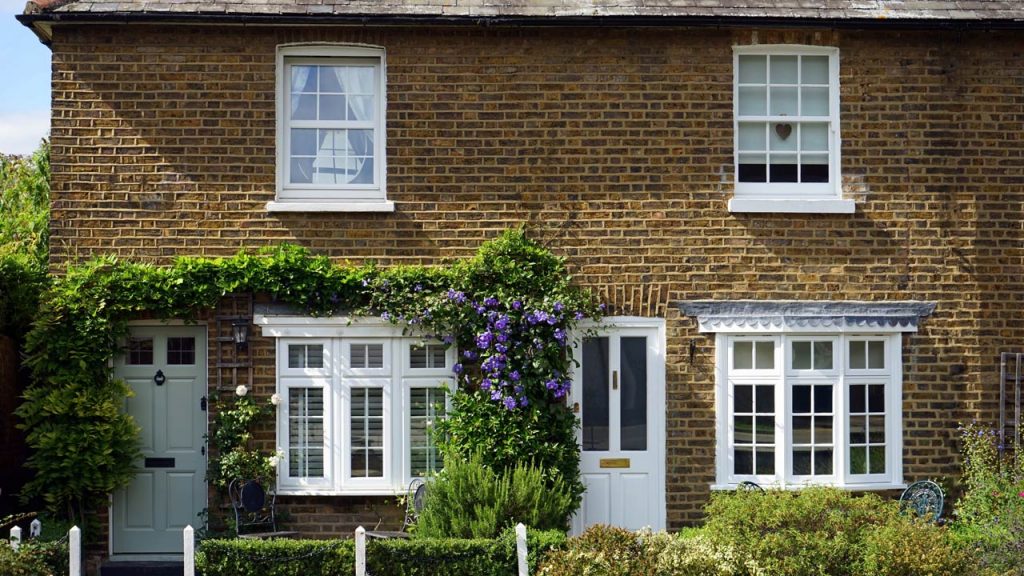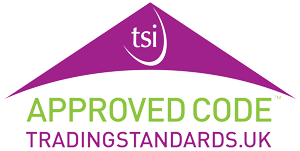Arranging Your Finance
So, you’ve decided you would like to become a homeowner! I know the exciting part is to look on Rightmove and arrange viewings on a selection of potential properties, however it’s worth doing the boring part first, get all your ducks in a row! There’s nothing worse than finding your dream home then realising you can’t quite afford it.
If you physically have the cash in the bank, then you’re in a great position and you know how much you have to play with. If, however, like most of us, you require a mortgage then you need to find out how much you can borrow based on your income and credit score etc.
Hopefully by now you have saved a deposit or you are fortunate enough to be gifted a deposit. Get as much advice as you need, speak to your bank and then we would always advise to speak with a local independent Financial Advisor who has access to a wider panel of lenders.
We can recommend a local independent Financial Advisor and organise a no obligation quotation on your behalf.
Don’t forget you will also need to budget for other buying costs including Solicitor’s fees, Stamp Duty, a survey, furnishings if required, removal costs etc.
Use our handy tool to calculate your mortgage:
Booking Viewings
- Before we can arrange a viewing on your behalf, we will need to know your contact details, buying position and requirements.
- Once we have all the required information we will ask you when you would like to view. We will then contact the homeowner and come back to you to confirm the appointment.
- We will always try to accommodate your desired timescale regarding a viewing, however it’s best to give us an alternative option just in case.
- If the property you would like to view is advertising an Open House, then you will need to let us know if you are attending.
Making an Offer
- We would always recommend a second viewing before making an offer. If, however if you feel confident about buying the property after your initial visit then please call us to discuss your offer on 01380 592 175 or you can email your offer in writing to enquiries@caulfieldsresidentialsales.co.uk
- We will always acknowledge receipt of your offer verbally within 24 hours and in writing within 48 hours
- Please make sure you have your proof of funding in place with contact details of your Financial Advisor/lender.
- We will need to see photographic ID and a utility bill (dated within the last 3 months) for proof of address.
- You will also need to provide us with your Solicitor’s details.
- If you are selling a property in order to buy then we will need your Estate Agents details to check the chain.
- All the necessary checks must be carried out and we must be in receipt of all the relevant documentation before we can officially take the property off the market.
Instructing a Solicitor
- Once you have made the decision to buy it would be advisable to start getting quotes for a Solicitor/Conveyancer to progress the sale from an offer to an exchange of contracts and finally completion.
- You do not have to instruct a Solicitor/Conveyancer until you have agreed a sale, however it would speed up the process if you have already done so while you are viewing potential properties to buy.
- You will be asked for your Solicitor’s details when you make an offer.
- We would always recommend a local independent Solicitor/Conveyancer who knows the local area.
- We can recommend a local independent firm and request a free no obligation quotation on your behalf.
Stamp Duty Land Tax
Residential property rates
You usually pay Stamp Duty Land Tax (SDLT) on increasing portions of the property price when you buy residential property, for example a house or flat. SDLT only applies to properties over a certain value.
The amount you pay depends on:
- when you bought the property
- how much you paid for it
Here’s our quick calculator
You must send an SDLT return if you pay more than £40,000 for a property – even if there’s no SDLT due. There are some exemptions.
Rates for a single property
You pay stamp duty at these rates if, after buying the property, it is the only residential property you own. You usually pay 3% on top of these rates if you own another residential property.
There were different thresholds and rates for residential properties before 23 September 2022.
You can also use this table to work out the SDLT for the purchase price of a lease (the ‘lease premium’).
| Property or lease premium or transfer value | SDLT rate |
|---|---|
| Up to £250,000 | Zero |
| The next £675,000 (the portion from £250,001 to £925,000) | 5% |
| The next £575,000 (the portion from £925,001 to £1.5 million) | 10% |
| The remaining amount (the portion above £1.5 million) | 12% |
Example
In October 2022 you buy a house for £295,000. The SDLT you owe will be calculated as follows:
- 0% on the first £250,000 = £0
- 5% on the final £45,000 = £2,250
- total SDLT = £2,250
Use the SDLT calculator to work out how much tax you’ll pay.
If you’re buying your first home
You can claim a discount (relief) if the property you buy is your first home. This means you’ll pay:
- no SDLT up to £425,000
- 5% SDLT on the portion from £425,001 to £625,000
You’re eligible if you and anyone else you’re buying with are first-time buyers.
There were different thresholds and rates for residential properties before 23 September 2022.
If the price is over £625,000, you cannot claim the relief. Follow the rules for people who’ve bought a home before.
Example
You are a first-time buyer and purchase a property for £500,000. The SDLT you owe will be calculated as:
- 0% on the first £425,000 = £0
- 5% on the remaining £75,000 = £3,750
- total SDLT = £3,750
New leasehold sales and transfers
When you buy a new residential leasehold property you pay SDLT on the purchase price of the lease (the ‘lease premium’) using the rates above.
If the total rent over the life of the lease (known as the ‘net present value’) is more than the SDLT threshold (currently £250,000), you’ll pay SDLT at 1% on the portion over £250,000.
This does not apply to existing (‘assigned’) leases.
There were different thresholds and rates for residential properties before 23 September 2022.
You can work out how much SDLT you’ll pay for your new residential lease using HMRC’s:
Higher rates for additional properties
You’ll usually have to pay 3% on top of SDLT rates if buying a new residential property means you’ll own more than one.
Use the SDLT calculator or check the higher rates to work out how much tax you’ll pay.
If you’re replacing your main residence
You will not pay the extra 3% SDLT if the property you’re buying is replacing your main residence and that has already been sold.
If you have not sold your main residence on the day you complete your new purchase you’ll have to pay higher rates. This is because you own 2 properties.
You can apply for a refund if you sell your previous main home within 36 months.
There are special rules if you own property with someone else or already own a property outside England, Wales and Northern Ireland. Read the special rules for purchases that mean you own more than one property.
If it takes longer than 36 months to sell your previous main home
You may still be able to get a refund of the extra 3% SDLT if all of the following apply:
- you purchased your new home on or after 1 January 2017
- exceptional circumstances stopped you from selling your old home, for example government restrictions because of coronavirus (COVID-19) or a public authority blocking the sale
- you have now sold your old home
To claim a refund, write to HMRC and explain why the sale took longer than 36 months.
Include:
- your details
- details of the main buyer – if different to your own
- details of the exceptional circumstances that prevented the sale of your property
- details of the property where higher rate SDLT was paid – including the address, date of purchase and SDLT unique transaction reference number
- details of the previous main residence – including the address, date of sale and SDLT unique transaction reference number
- the amount of higher rate SDLT paid
- the amount of tax you’re asking for a repayment of
- a bank account and sort code for the person receiving the payment
Rates if you’re not a UK resident
If you’re not present in the UK for at least 183 days (6 months) during the 12 months before your purchase you are ‘not a UK resident’ for the purposes of SDLT.
You’ll usually pay a 2% surcharge if you’re buying a residential property in England or Northern Ireland.
You may not have to pay a surcharge on certain properties, transactions or if you’re a particular type of buyer. Check the rules on who has to pay the surcharge, when you do not have to pay, and if you can claim relief.
If you have to pay the surcharge, you’ll also have to pay any other rates of SDLT that apply, for example:
- if you already own a property and you’re buying an additional property
- if you’re a first-time buyer
Use the SDLT calculator to work out how much tax you’ll pay.
Arranging a Survey
- Once the sale has been agreed, you’ve provided all the necessary documentation, instructed your Solicitor and the property has been taken off the market, you may want to arrange an independent survey.
- If you are using a mortgage, then your lender will send a Surveyor out to look at the property, but this is purely to make sure the sale price agreed is accurate.
- We would advise you arrange your own survey. An independent Surveyor will write a report on the property highlighting any defects that are cause for concern.
- A Surveyor will normally ask you questions about the property you are buying and recommend the correct survey for the property.
- We can recommend a local independent Surveyor for you and request a free no obligation quotation on your behalf.
Moving In
- Once you have decided to buy it is advisable to get quotes from a removal company unless you plan to move yourself!
- We would recommend a local independent firm and can organise a free no obligation quotation on your behalf.
- An exchange of contracts can only happen once a completion date has been agreed by all parties involved.
- Once the Solicitors have advised us that the funds have been transferred, only then can we release the keys to your new home. Although we hope this happens swiftly on the day, often it will be after lunch time, but it can happen anytime.
- Once the keys have been released, you are officially the new owner of the property and can therefore start moving in. It is important to be organised for moving day, however in the real world we know there can be delays! We will keep everyone informed of timescales on the day.








